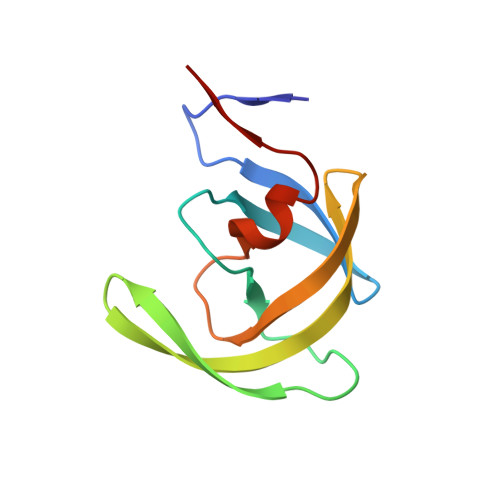Developing HIV-1 Protease Inhibitors through Stereospecific Reactions in Protein Crystals.
Olajuyigbe, F.M., Demitri, N., De Zorzi, R., Geremia, S.(2016) Molecules 21
- PubMed: 27809253
- DOI: https://doi.org/10.3390/molecules21111458
- Primary Citation of Related Structures:
3TOF, 3TOG, 3TOH - PubMed Abstract:
Protease inhibitors are key components in the chemotherapy of HIV infection. However, the appearance of viral mutants routinely compromises their clinical efficacy, creating a constant need for new and more potent inhibitors. Recently, a new class of epoxide-based inhibitors of HIV-1 protease was investigated and the configuration of the epoxide carbons was demonstrated to play a crucial role in determining the binding affinity. Here we report the comparison between three crystal structures at near-atomic resolution of HIV-1 protease in complex with the epoxide-based inhibitor, revealing an in-situ epoxide ring opening triggered by a pH change in the mother solution of the crystal. Increased pH in the crystal allows a stereospecific nucleophile attack of an ammonia molecule onto an epoxide carbon, with formation of a new inhibitor containing amino-alcohol functions. The described experiments open a pathway for the development of new stereospecific protease inhibitors from a reactive lead compound.
Organizational Affiliation:
Centre of Excellence in Biocrystallography, Department of Chemical and Pharmaceutical Sciences, University of Trieste, Trieste 34127, Italy. folajuyi@futa.edu.ng.

















